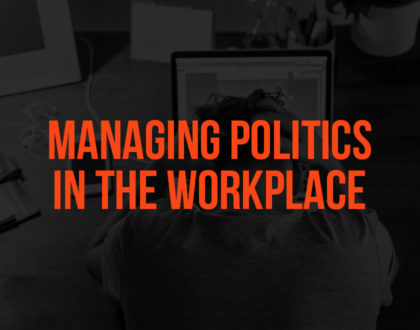How to foster a more inclusive workplace during election season

Note: This article was originally published in 2020, but given what is shaping up to be a contentious election season, this guide remains a useful resource for navigating this delicate time.
There was much at stake during the 2020 U.S. presidential elections. We are still grappling with a global pandemic, continued police brutality, anti-Blackness, and many deep-rooted inequities that afflict our country. Many of us are experiencing heightened anxiety and stress about election results and potential ensuing events. Many employees and organizations continued to work on Election Day and may be wondering how to be more supportive and inclusive following the election. During a recent YW Boston DEI Community of Practice meeting, the team shared their questions, concerns, and strategies for supporting inclusive workplaces during a contentious election season. Here is a summary of this discussion along with additional resources.
For Senior Leaders
Fostering an inclusive workplace demands a commitment to digging deeper, creating an environment conducive to open and honest communication and to the sometimes challenging issues or conversations it can surface. To do so effectively, a senior leader must build knowledge and understanding of implicit bias and how it functions, particularly in regards to race; explore methods to interrupt this bias through building awareness and new habits; apply this learning through small group activities.
Here are a few questions to consider as we move through this election season:
- How explicitly do we address this?
- Under what circumstances do we issue an internal statement?
- Under what circumstances do we issue an external statement?
- Do we have a role in encouraging our employees to vote or facilitating their ability to vote by offering time off, flex-time, or other?
- How might the election results impact our employees?
- For example, if protests erupt after the election, how might that impact employee’s commutes? Their physical and emotional safety? Their ability to focus on work?
- What would it look like to try to mitigate these issues?
Best practices for communication
As leaders in your organization, you have formal authority. It is important to keep in mind that what and how you communicate sets the tone for others. Communication can feel perilous at times when it is unclear what to say, but hesitance to start critical conversations has its own pitfalls; employees and stakeholders do and will remember a lack of communication too. Effective communications will tie the messaging to organizational values, focus on the effect rather than the result of the election, name the concerns people may have, and address them.
Pre-election
- Center your mission and organizational values in all interventions
- Check in with ERGs – are election-related tensions or disrespectful language showing up within their groups?
- Focus on mutual respect
- Identify and be prepared to share resources such as reminders of how to access EAP (Employee Assistance Programs) services
- Anticipate and address workplace-specific concerns given a variety of scenarios (each candidate winning, contested versus uncontested election, etc.)
Post-election
- Reassure. COVID-19 has brought deep disruption and uncertainty. We now have the possibility of an election that could remain undecided for a few days or weeks, adding to the uncertainty.
- If applicable, share steps to ensure physical safety.
- Acknowledge that employees may be frightened, uncertain, hurting, finding it difficult to focus.
- Recommit to core values of DEI, trust, respect, and shared focus of the work.
- Consider optional conversations on election day that employees can opt-in to.
Modes and Methods
There are many forums that can foster community and provide space for staff and stakeholder’s voices. Digital message boards, technology, messaging applications such as Slack, virtual employee resource groups, affinity group spaces, structured meetings, opt-in spaces, or facilitated conversations and town halls are all options that offer the opportunity to connect. With the proper framing, norms, and community agreements, you can help curate a space that continues to build community and understanding.
A town hall with the CEO or other senior leaders is a wonderful way to provide an opportunity for open dialogue across a whole organization, and for leadership to centralize messaging. If planning a town hall, the following considerations should be made in an effort to effectively hold space:
- Be clear in the purpose
- Protect time, town halls require a lot of preparation
- Understand what questions are likely to be asked beforehand
- An honest assessment of whether the CEO has the skills and emotional intelligence to do it.
Click here to download the resource “Thoughts on Managing Politics in the Workplace”
Additional resources
- Don’t let election passions roil your workplace – Bob Feldman for the Harvard Business Review
- Managing politics in the workplace – Diversity Best Practices
- How to hold workplace conversations through stress and trauma – YW Boston
- So, you want to talk about racism at work? – YW Boston
- Leading inclusively during a crisis: 7 ways to make virtual meetings more inclusive – YW Boston
YW Boston is prepared to help you shape your internal strategy around diversity, equity, and inclusion. Contact us to learn more about how we can partner with you.
______
About YW Boston
As the first YWCA in the nation, YW Boston has been at the forefront of advancing equity for over 150 years. Through our DE&I services—InclusionBoston and LeadBoston—as well as our advocacy work and F.Y.R.E. Initiative, we help individuals and organizations change policies, practices, attitudes, and behaviors with a goal of creating more inclusive environments where women, people of color, and especially women of color can succeed.
